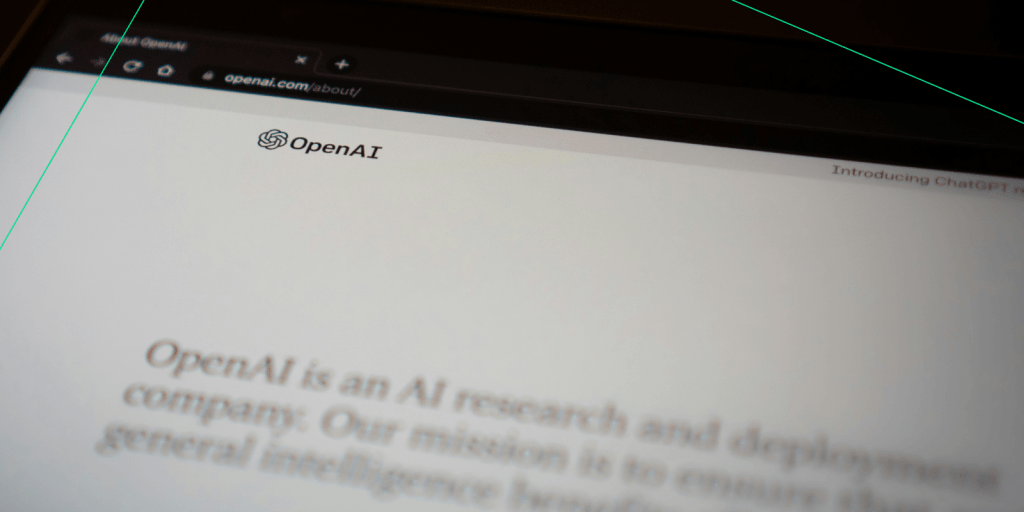In part one of this series, we examined the complexities of integrating AI features into existing websites, especially those with older infrastructures. Senior Developer Jeff Zalischi outlined two key approaches: updating the frontend framework for seamless AI feature integration and leveraging Docker containers for scalability and deployment flexibility. Both methods offer unique benefits, from enhanced user experiences to independently scaling AI functionalities. Now, in part two, we shift focus to the critical process of selecting the right AI models, exploring options like pre-trained, open-source, and fine-tuned models, and guiding you toward strategic decisions for optimal integration.
Exploring the AI Model Ecosystem for Seamless Integration
Integrating AI into your website demands a deliberate approach to selecting the most suitable model for your needs. The choice of model not only influences the quality and efficiency of the tasks performed but also affects operational costs, inference speed, and ease of deployment. With the growing availability of open-source models and fine-tuning options for specialized applications, the ecosystem of AI solutions has become more diverse and complex. This guide simplifies the decision-making process, offering insights into various model types to help you align your integration strategy with your technical and business objectives.
Understanding Key AI Model Categories
1. Pre-Trained Models
Pre-trained models, such as GPT for text and specialized image and audio models, are built for general-purpose tasks. They are trained on extensive datasets to handle activities like language comprehension, image interpretation, and audio processing, making them suitable for many applications.
Example #1: OpenAI’s GPT-4
– Use Case: ChatGPT for customer service, content generation, and language translation.
– Details: GPT models are pre-trained on vast amounts of text data to handle natural language understanding and generation tasks. For instance, companies like Duolingo use GPT to power conversational learning tools for language acquisition.
Example #2: CLIP (Contrastive Language-Image Pre-Training) by OpenAI
– Use Case: Associating images with textual descriptions for content moderation and image search applications.
– Details: CLIP is pre-trained to understand relationships between text and images, enabling applications such as labelling image datasets or assisting in creative workflows.
2. Embedding Models
These models are designed for tasks requiring contextual understanding and relationships within data. By converting inputs into vectors, embedding models are ideal for semantic analysis, search engines, and recommendation systems.
Example #1: Sentence-BERT (SBERT)
– Use Case: Semantic search in customer service chatbots.
– Details: By embedding text into a vector space, SBERT allows chatbots to find the most relevant response in a database of FAQs.
Example #2: DeepWalk
– Use Case: Graph-based recommendation systems, such as recommending connections on LinkedIn.
– Details: DeepWalk generates embeddings for nodes in a graph (e.g., social network connections), facilitating predictions based on relational data.
3. Open-Source Models
Open-source AI models offer unparalleled flexibility for customization and self-hosting. They can be tailored to specific datasets or tasks, enabling businesses to create bespoke solutions that address unique needs while retaining control over deployment.
Example#1: Hugging Face Transformers
– Use Case: Customizable NLP tools for chatbots, summarization, and translation.
– Details: Hugging Face offers open-source implementations of transformer-based models, such as BERT, GPT, and RoBERTa, which developers can fine-tune and deploy for specific applications.
Example #2: Stable Diffusion
– Use Case: Generative AI for creating custom images or enhancing creative workflows.
– Details: Stable Diffusion allows users to self-host and adapt the model to generate images based on textual prompts, ideal for advertising or design customization.
4. Fine-Tuned Models
Fine-tuning enhances pre-trained models by adapting them to specific datasets or tasks. This customization improves performance and accuracy, making fine-tuned models particularly effective for niche applications requiring precision and relevance.
Example #1: Fine-Tuned GPT-4 for Healthcare Documentation
– Use Case: Automating medical record summaries or generating patient discharge notes.
– Details: Healthcare providers fine-tune GPT-4 with domain-specific datasets, such as medical terminology and patient history templates, to improve accuracy and relevance in clinical documentation workflows.
Example #2: Fine-Tuned DALL·E for Product Design
– Use Case: Generating product mock-ups tailored to specific industries.
– Details: By training DALL·E on a dataset of industry-specific designs, companies can generate tailored product images that align with their branding.
Fine-Tuning Fundamentals and Advantages
Fine-tuning is critical for adapting AI models to specialized tasks or datasets. By training a pre-trained model on new data or for a new task, fine-tuning makes the model more effective and efficient in specific contexts. This approach offers several advantages:
– Increased Accuracy: Tailoring the model to your specific needs improves its performance and accuracy in your application domain.
– Cost Efficiency: Fine-tuned models can be more efficient, reducing the computational resources and time needed for inference.
– Customization: Allows for customization to meet unique business needs or to cater to niche markets and specific user requirements.
– Enhanced Relevance: Models can be fine-tuned to align with industry jargon, localized languages, or particular processes, making them more applicable and effective in specialized contexts.
– Faster Deployment: Fine-tuning builds on existing pre-trained models, cutting down development time and facilitating quicker deployment of AI-powered features.
Model Selection Considerations
– API vs. Self-Hosting: Depending on the model you select, you might be restricted to using a specific API or choose to host the model yourself. APIs offer simplicity and ease of integration but may come with limitations on customization and potentially higher long-term costs. Self-hosting provides full control and customization but requires infrastructure and expertise for setup and maintenance.
– Open Source Options: Open-source models provide a flexible foundation for building custom AI solutions. They require more effort to integrate and fine-tune but offer significant cost advantages and the freedom to modify the model as needed.
– Operational Costs and Infrastructure: The choice between using an API service and self-hosting impacts both the operational costs and the infrastructure required. Self-hosting demands robust infrastructure and expertise but can be more cost-effective at scale.
– Ease of Integration: Consider models that align with your technology stack and offer straightforward integration paths. Open-source and fine-tuned models might require additional integration efforts but provide tailored functionalities.
– Inference Speed: The time it takes for a model to process input and return a result is crucial, especially for user-facing features where response time impacts the user experience. Evaluate the inference speed of each model to ensure it meets your application’s performance requirements.
– Task Efficiency: Choose a model that excels in the specific task you’re aiming to accomplish. For instance, GPT models for text-based applications, embedding models for search and recommendation, image models for visual tasks, and audio models for sound processing.
Your AI Integration Journey Starts Here
Integrating AI into your website is a multifaceted process that requires thoughtful consideration of both the methods and models involved. At Trew Knowledge, we specialize in crafting tailored AI integration strategies that align with your goals and technical requirements. By partnering with us, you can unlock AI’s transformative potential to enhance your website’s functionality, user experience, and overall impact. Contact us today.


